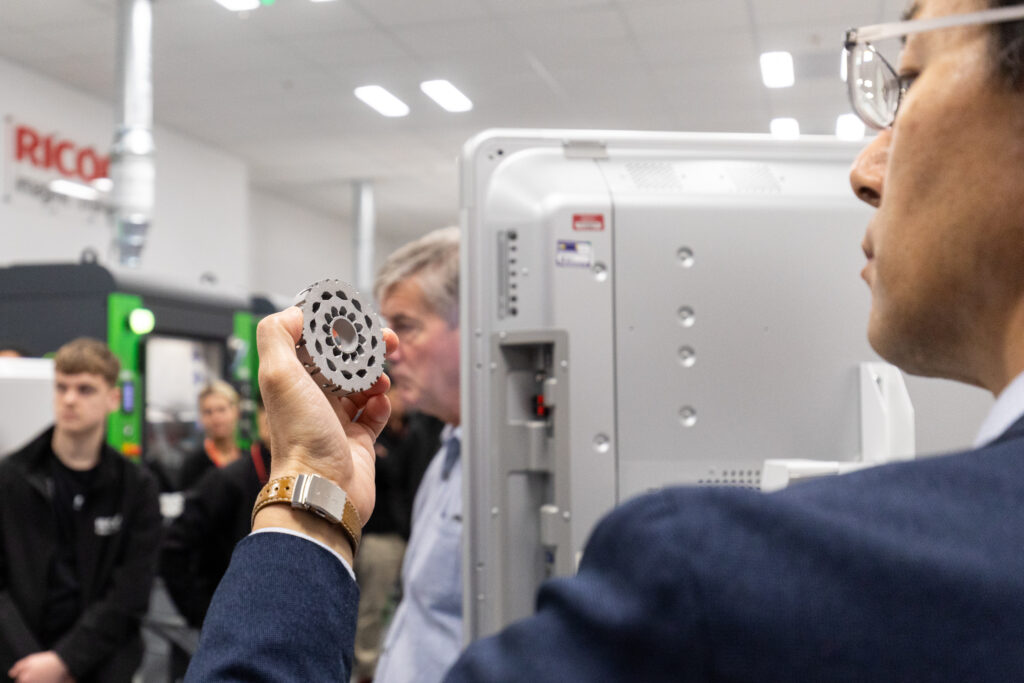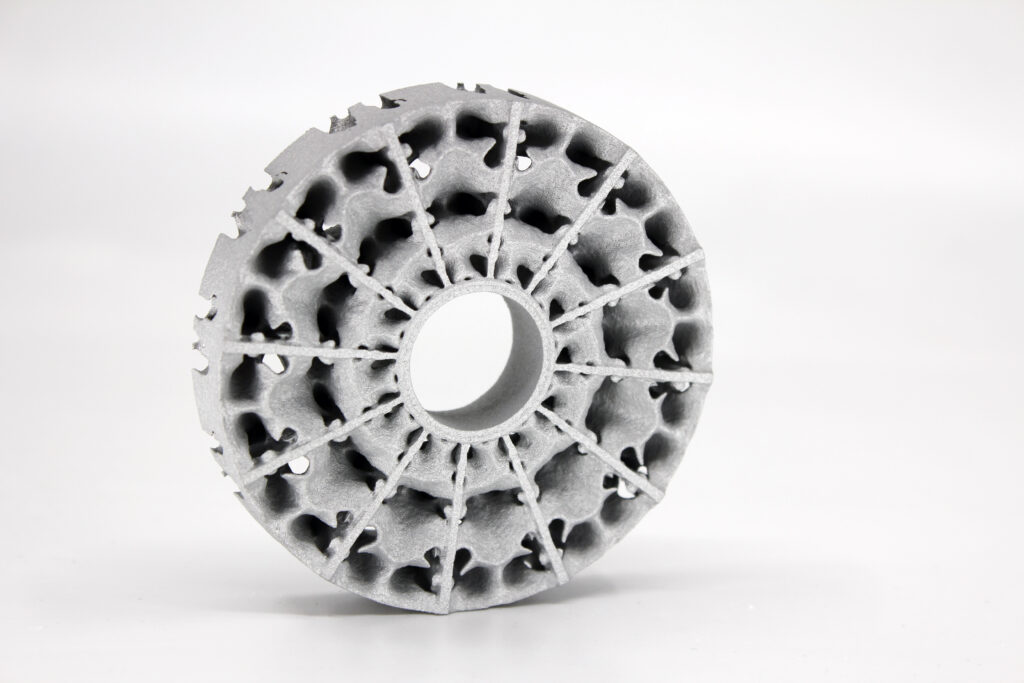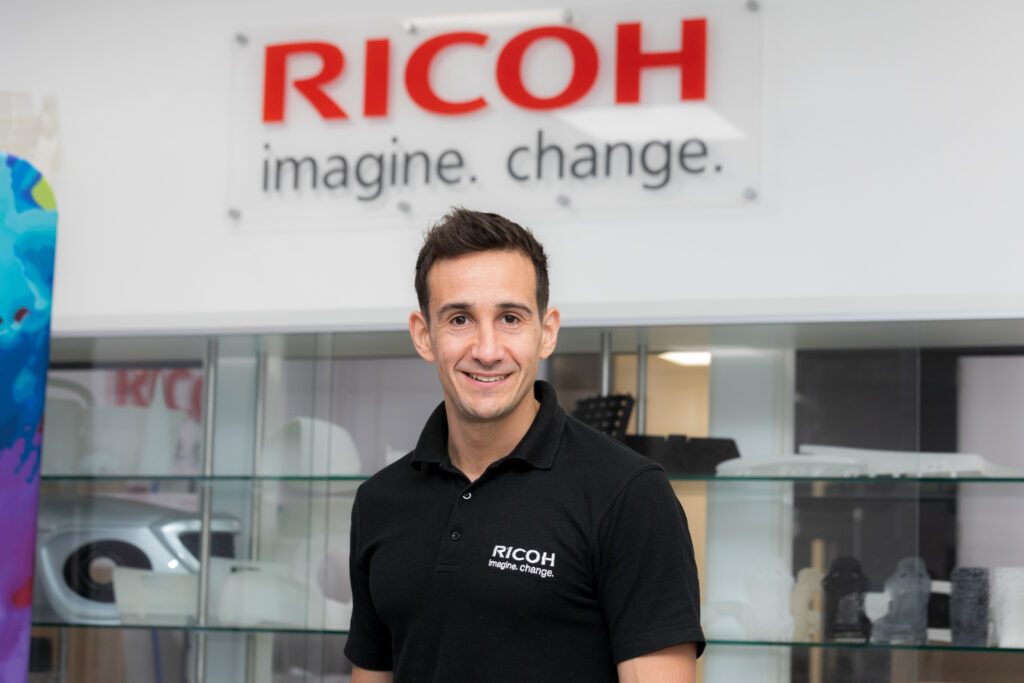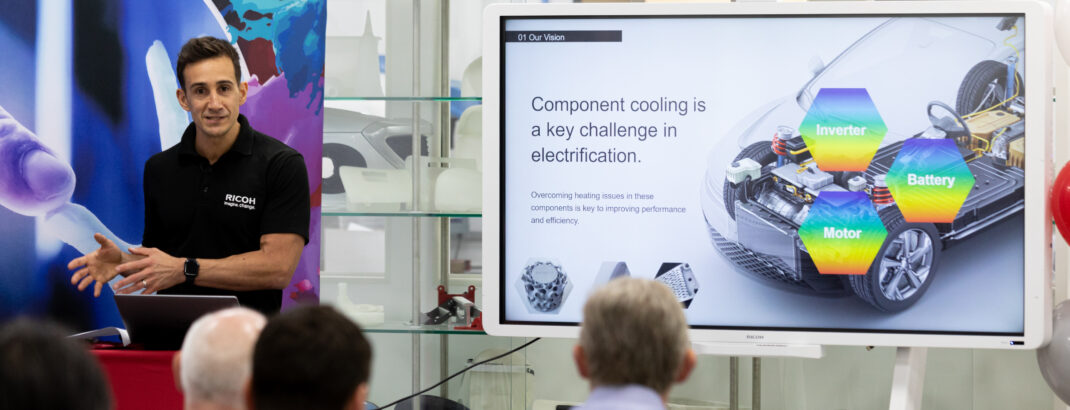Metal Binder Jetting (BJT) has emerged as a game-changing technology in the world of manufacturing, especially when it comes to working with aluminium.
It offers a wide array of advantages over conventional manufacturing processes, making it an innovative choice for various applications.
In this short Q&A interview, Mark Dickin, Additive Manufacturing Manager at Ricoh 3D begins to explore how RICOH’s Metal Binder Jetting technology “revolutionises the production of aluminium parts”, enhances design freedom, reduces costs, and contributes to performance enhancements with the potential for some notable sustainability attributes.

Q: How much design freedom does aluminium BJT provide compared to conventional methods?
A: “One of the key advantages of our BJT is the design freedom it offers for aluminium components.
“Conventional manufacturing methods often come with design limitations. However, with BJT, engineers and designers can now create intricate, lightweight and performance enhancing geometries that were once considered challenging or impractical.
“This newfound design freedom is especially valuable in industries that require complex and customised components.”
Q: What does aluminium BJT offer in terms of process innovation?
A: “Innovation is at the core of BJT, where aluminium is taking centre stage.
“Compared to conventional aluminium manufacturing, which relies heavily on subtractive methods like machining, casting, or forming, BJT is an additive manufacturing process.
“In short, it builds up parts layer by layer using a fine powder and a binder.
“Aluminium is inherently difficult to sinter, but with our knowhow, manufacturing and innovation heritage and commitment to research and development (R&D), we have developed a method of successfully sintering components which has opened up binder jetting for aluminium.”

Q: What is Design for Additive Manufacturing and what impact does it have on the overall design of a product?
A: “Design for Additive Manufacturing (DfAM) is a crucial aspect when using BJT.
“By understanding the capabilities of the additive process, designers can optimise their designs for better performance.
“DfAM ensures that parts are optimised, functional and performance-enhancing to ensure better product outcomes.”

Q: How does BJT align with Sustainable Development Goals?
A: “Apart from performance enhancement, BJT is also known for its ability to produce lightweight aluminium components. This feature is especially significant in industries like aerospace and automotive, where reducing weight directly translates to improved fuel efficiency and reduced carbon emissions.
“The contribution of BJT in reducing CO2 emissions is a notable step towards sustainable manufacturing practices.
“Towards the realisation of a zero-carbon society, Ricoh 3D is encouraging businesses to contribute to the electrification of automotive, aircraft and other mobility industries alike – and multiple other industries too – by innovating heat exchange parts and making parts lighter and smaller, such as heat exchangers, batteries and invertors.
“Not to mention that RICOH’s unique BJT process optimises material usage, eradicating waste which would occur via traditional manufacturing means.”
Q: How does BJT ‘perform’ when it comes to thermal management?
A: “RICOH’s own aluminium material is an excellent conductor of heat, and with our unique BJT technology and processes, intricate heat exchanger designs can be achieved, maximising thermal efficiency and overall system performance.
“The combination of DfAM and thermal management capabilities positions BJT as a top choice for manufacturing complex heat exchanger structures.”
Find out how RICOH redesigned its THETA camera housing as a thermal management solution, enabling 24-hour streaming to monitor one of its factory lines in a high-heat environment as hot as 32°C (90° F). Access the case study.
Q: Reducing costs is just as important as making a high-quality product. Does BJT help in this regard?
A: “Metal Binder Jetting reduces costs in many ways.
“The elimination of expensive tooling and minimal material waste contribute to overall cost savings.
“While the initial investment in 3D printing equipment may be higher, the long-term cost per part can be significantly lower compared to traditional manufacturing methods.
“As product volumes increase, overall manufacturing costs are reduced.
“It’s worth noting, businesses need to look at costs differently from A to B transactions… Additive Manufacturing as a ‘total system’ can reduce costs.
“Life cycle analysis, traditionally used to assess environmental impacts, can also help quantify the potential savings of adopting AM techniques, allowing companies to look beyond traditional cost models and metrics to more holistically determine how AM may benefit their business.”

